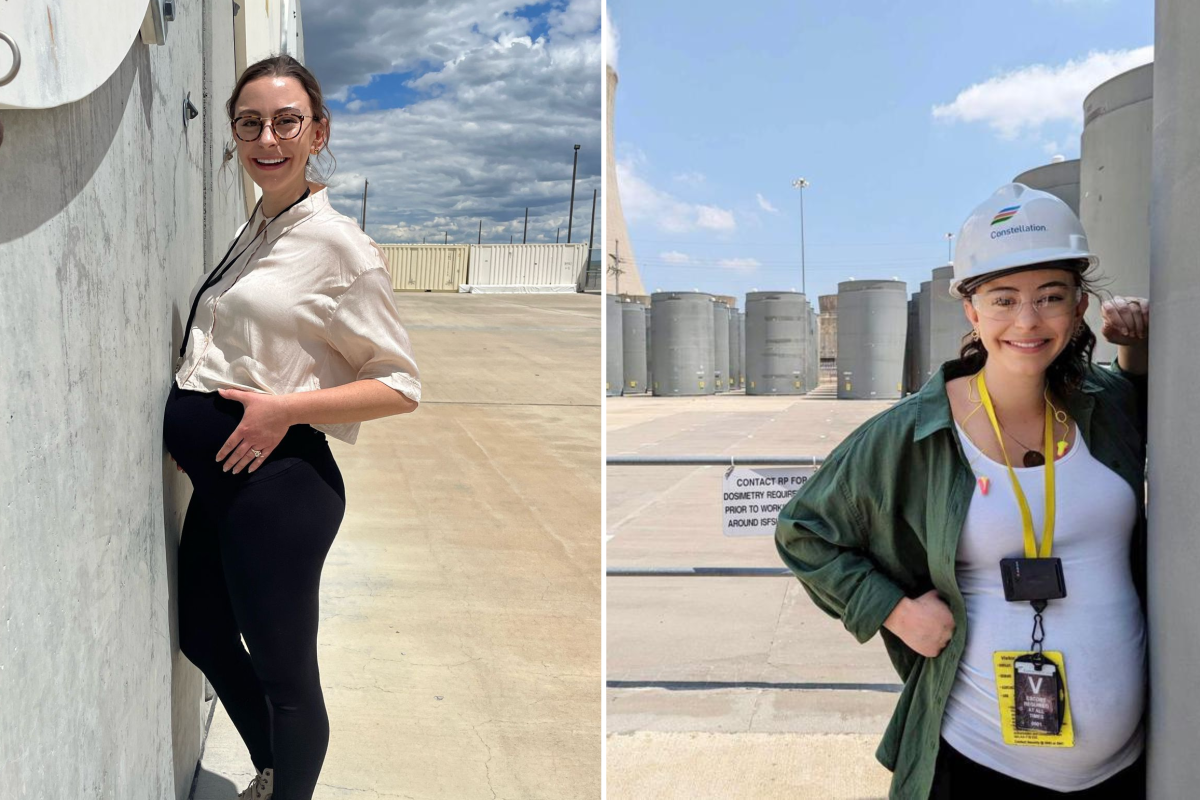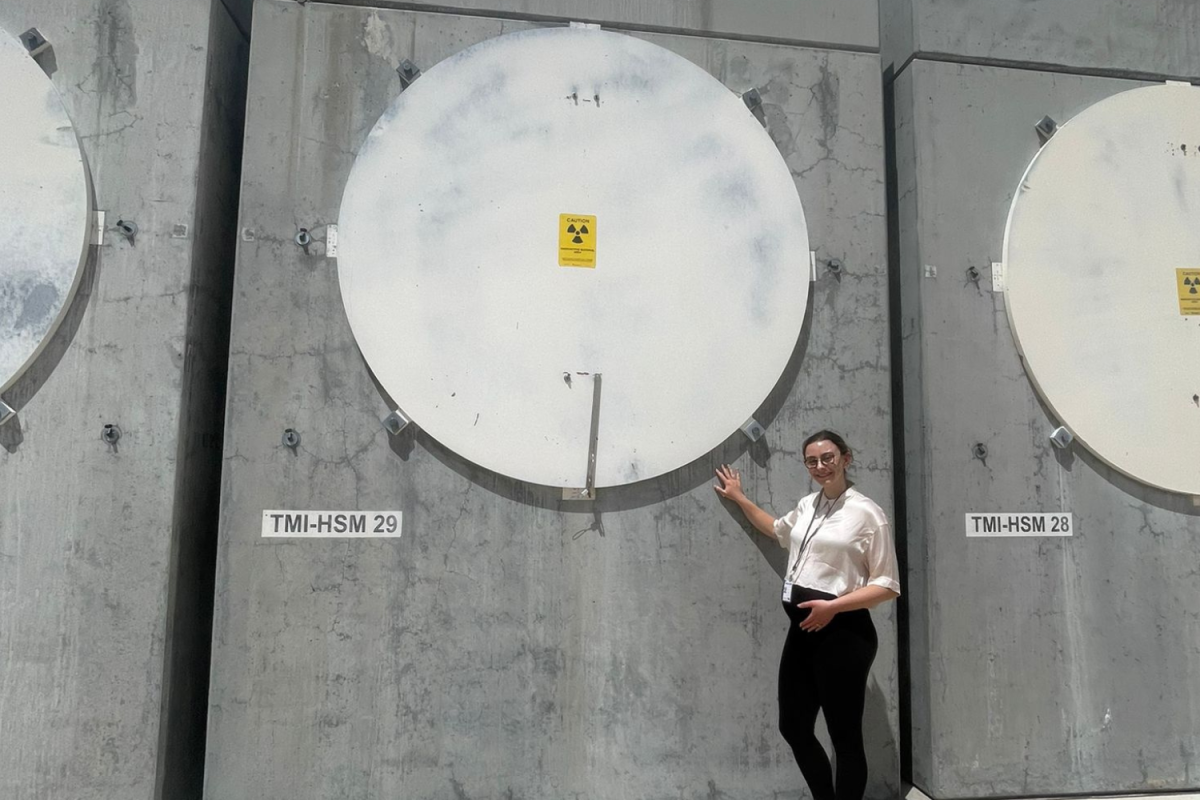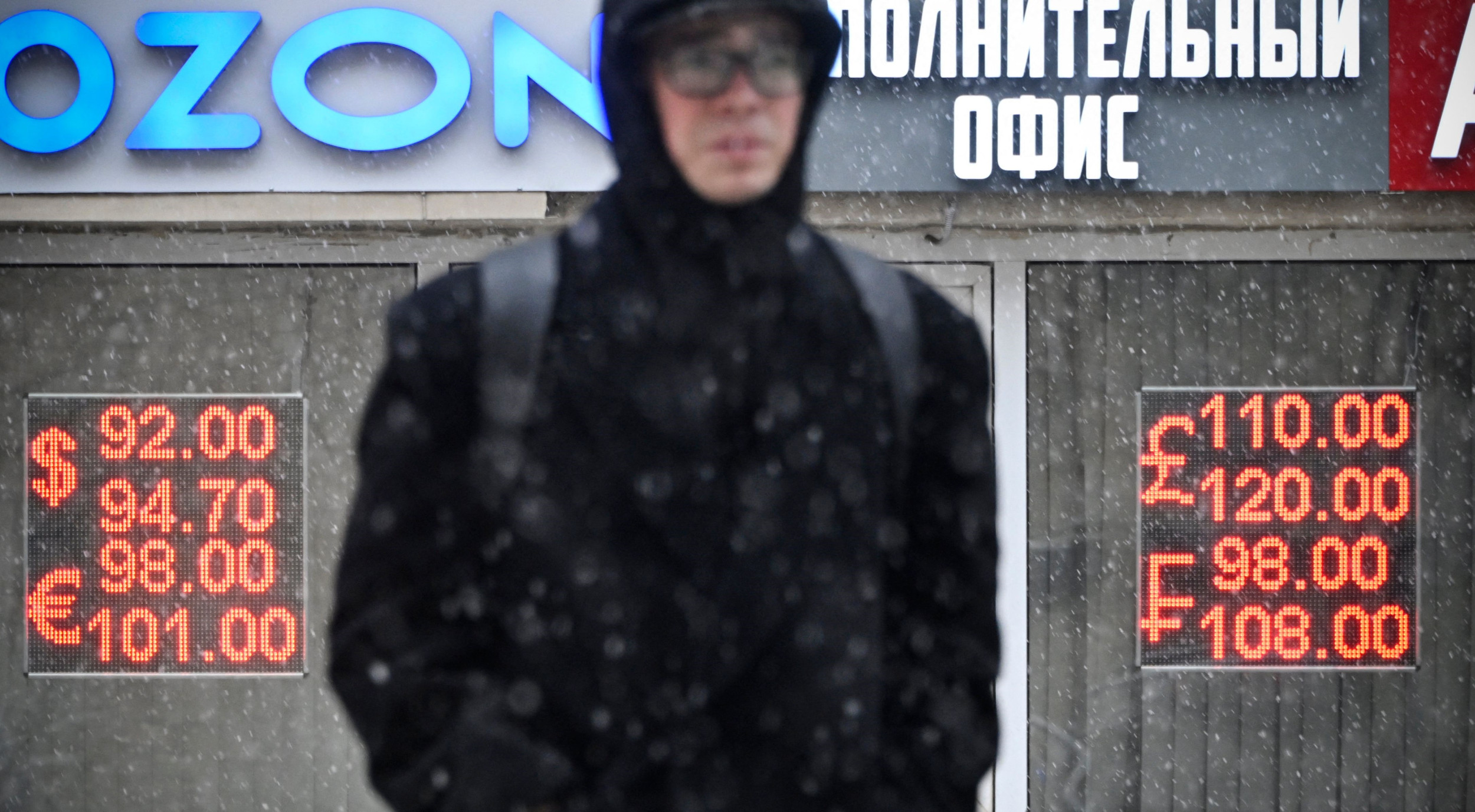A pregnant woman has used a photoshoot to prove that she has no concerns about nuclear power.
Nuclear advocate Madison Hilly is 27 and lives in Chicago with her husband. She has been working to advocate for nuclear power for the last six years and is the founder of Campaign for a Green Nuclear Deal.
"It is an advocacy effort I launched in 2021 to build support around a new vision of nuclear growth in America," Hilly told Newsweek.
"By building nuclear power, we can rebuild our economy while creating generational jobs in clean energy, reviving American industries, and reestablishing the USA as the global leader of this critical technology," she said.

Now 27 weeks pregnant, as part of her campaigning she had a fresh idea to help people understand her perspective and decided to create a photoshoot with her unborn baby at the Idaho National Laboratory.
"When I had the opportunity to visit the Idaho National Laboratory and get up close to some of the 'spiciest' nuclear waste in the country, I thought it would be a great opportunity to demonstrate how much of a non-issue nuclear waste is," Hilly explained.
In a series of pictures, a heavily pregnant Hilly poses alongside dry casks that store nuclear waste.
"The trouble with talking about nuclear waste is that most people don't know what it is or what it looks like. Thanks to The Simpsons, many people think nuclear waste is a bright green liquid and stored in leaky oil drums," she explained. "I find that when people see pictures of nuclear waste and discover that it's actually solid metal, safe enough to hug [when safely stored] and actually quite boring—it alleviates a lot of their anxieties."
Nuclear waste is a byproduct of nuclear power generation and medical or industrial uses of radioactive material. A radioactive substance, it is potentially dangerous as it emits ionizing radiation that can be harmful to humans and animals.

Exposure to high levels of radiation can cause various problems including radiation sickness, cancer and genetic damage.
Radiation exposure can be particularly dangerous for pregnant women and their babies and has been associated with increased risks of birth defect, impaired fetal growth and development and higher risks of childhood cancers.
Despite the potential risks, many people support the use of nuclear energy, seeing it as a solution to the future of energy production.
Nuclear power is often considered a low-carbon, low-emission energy source. From a greenhouse gas emissions standpoint, nuclear power does not emit carbon dioxide or other greenhouse gasses during generation, unlike fossil fuel plants that burn coal or oil. Such factors are part of the reason that even those on the left appear to be moving towards a "grudging acceptance" of nuclear power.
The argument against nuclear energy lies with the waste product it generates. But Hilly wanted to spread the message that, properly managed and deposed of, there can be minimal risk from nuclear waste.
"I know first-hand how seriously safety is taken within the industry, so much so that it can often feel ridiculous," she said. "That's not to say I didn't receive any radiation from my trip. I got radiation from the flight from Chicago to Idaho Falls, from the banana I ate for breakfast and from being out in the sun for the photo shoot. However, I got no registrable dose from bumping up to the nuclear waste. The extreme safety of nuclear waste management can't be faked."
Hilly began her career fighting for nuclear power as a researcher and analyst for Environmental Progress, a pro-nuclear research and policy organization in Berkeley, California, before launching the Campaign for a Green Nuclear Deal.
She holds a BS in Environmental Sciences and Political Science from the University of Wisconsin-Madison.
In a post on Twitter with more than 557,000 views and thousands of likes, Hilly shared the pictures alongside the caption: "No babies received any excess radiation in the making of this nuclear waste maternity photoshoot," and hopes that it will spark conversation.
"My hope was that these photos would combat the fantasy of nuclear waste and inspire those who were surprised by them to learn more about real nuclear waste," she said.
"Each cask of nuclear waste in this country also represents over 2 million tonnes of carbon that wasn't emitted into the atmosphere from burning coal or natural gas," said Hilly. "But in order to build more nuclear to replace fossil fuels, we'll need to get over our collective hang-up on [nuclear] waste."
Uncommon Knowledge
Newsweek is committed to challenging conventional wisdom and finding connections in the search for common ground.
Newsweek is committed to challenging conventional wisdom and finding connections in the search for common ground.
About the writer
Alice Gibbs is a Newsweek Senior Internet Trends & Culture Reporter based in the U.K. For the last two years ... Read more
To read how Newsweek uses AI as a newsroom tool, Click here.








